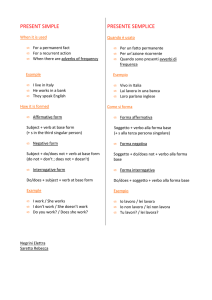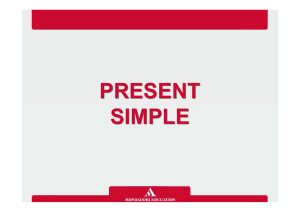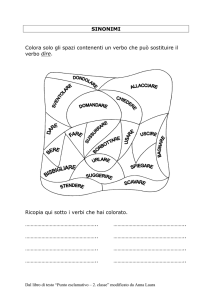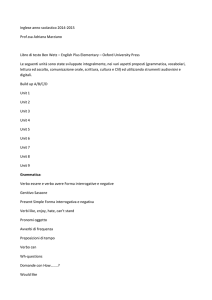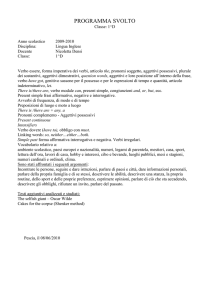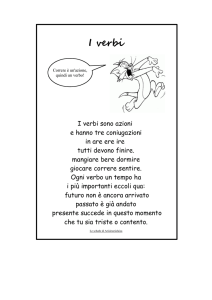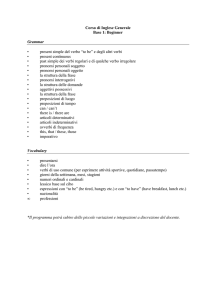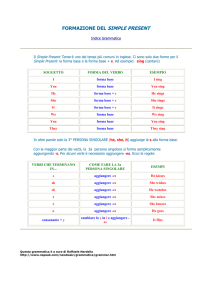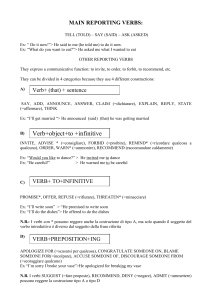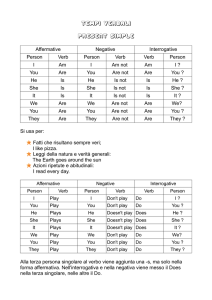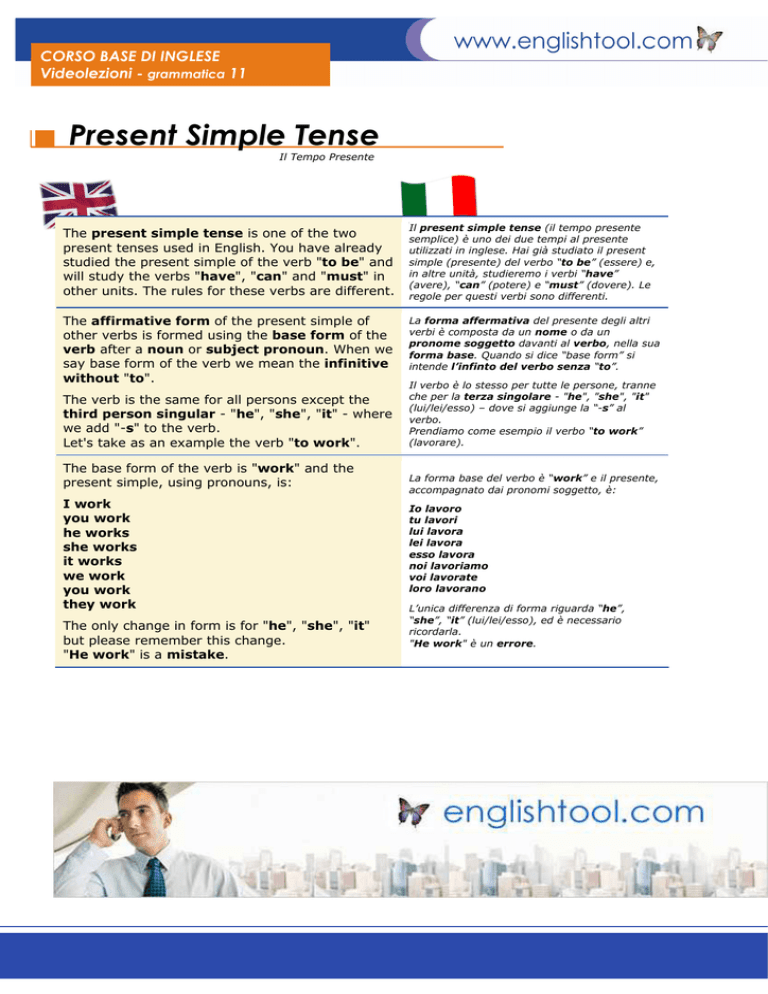
CORSO BASE DI INGLESE
Videolezioni - grammatica 11
Present Simple Tense
Il Tempo Presente
The present simple tense is one of the two
present tenses used in English. You have already
studied the present simple of the verb "to be" and
will study the verbs "have", "can" and "must" in
other units. The rules for these verbs are different.
Il present simple tense (il tempo presente
semplice) è uno dei due tempi al presente
utilizzati in inglese. Hai già studiato il present
simple (presente) del verbo “to be” (essere) e,
in altre unità, studieremo i verbi “have”
(avere), “can” (potere) e “must” (dovere). Le
regole per questi verbi sono differenti.
The affirmative form of the present simple of
other verbs is formed using the base form of the
verb after a noun or subject pronoun. When we
say base form of the verb we mean the infinitive
without "to".
La forma affermativa del presente degli altri
verbi è composta da un nome o da un
pronome soggetto davanti al verbo, nella sua
forma base. Quando si dice “base form” si
intende l’infinto del verbo senza “to”.
The verb is the same for all persons except the
third person singular - "he", "she", "it" - where
we add "-s" to the verb.
Let's take as an example the verb "to work".
The base form of the verb is "work" and the
present simple, using pronouns, is:
I work
you work
he works
she works
it works
we work
you work
they work
The only change in form is for "he", "she", "it"
but please remember this change.
"He work" is a mistake.
Il verbo è lo stesso per tutte le persone, tranne
che per la terza singolare - "he", "she", "it"
(lui/lei/esso) – dove si aggiunge la “-s” al
verbo.
Prendiamo come esempio il verbo “to work”
(lavorare).
La forma base del verbo è “work” e il presente,
accompagnato dai pronomi soggetto, è:
Io lavoro
tu lavori
lui lavora
lei lavora
esso lavora
noi lavoriamo
voi lavorate
loro lavorano
L’unica differenza di forma riguarda “he”,
“she”, “it” (lui/lei/esso), ed è necessario
ricordarla.
"He work" è un errore.
CORSO BASE DI INGLESE
Videolezioni - grammatica 11
When verbs end in "s", double "s", "sh", "ch",
"x" or "z" we add "-es" for the third person
singular form and "-es" is pronounced as a
separate syllable.
Here are some examples:
kiss - kisses
push - pushes
teach - teaches
mix - mixes
buzz - buzzes
We also add "-es" to the verbs "do" and "go" to
form "goes" and "does".
Note that the pronunciation is not the same.
he does
he goes
she goes
she does
For verbs that end in "y" preceded by a
consonant we remove the "y" and add "-ies".
marry - marries
fly - flies
empty – empties
Quando i verbi terminano in ”s”, doppia “s”,
"sh", "ch", "x" o "z", si aggiunge “-es” alla
terza persona singolare. “-es” viene
pronunciato come una sillaba separata.
Ecco alcuni esempi:
bacio - bacia
spingo - spinge
insegno - insegna
miscelo - miscela
bisbiglio - bisbiglia
Si aggiunge “-es” anche ai verbi “do” (fare) e
“go” (andare) per formare “goes” (va) e
“does” (fa).
Osserva che la pronuncia non è la stessa.
lui
lui
lei
lei
fa
va
va
fa
Per i verbi che terminano in “y” preceduta da
consonante, si elimina la “y” e si aggiunge
“-ies”.
sposo - sposa
volo - vola
svuoto - svuota
But there is no change when a verb ends in "y"
preceded by a vowel:
Ma non c’è alcun cambio quando un verbo
termina in “y” ed è preceduto da una vocale:
play - plays
enjoy - enjoys
gioco - gioca
mi diverto - si diverte
The rules for these spelling changes are similar to
the rules for spelling changes in forming the plural
of nouns... but remember that here we are not
talking about plurals but about a verb ending - the
change in the base verb in the third person
singular ("he", "she", "it").
Le regole per questi cambi ortografici sono simili
a quelle utilizzate per formare il plurale dei
sostantivi... ma ricorda che qui non si sta
parlando del plurale bensì della desinenza dei
verbi – il cambio alla forma base alla terza
persona singolare ("he", "she", "it" –
lui/lei/esso).

